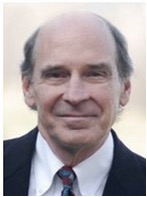By STEVE FINDLAY

Fifteen years after the landmark IOM report To Err is Human, we still haven’t figured out how to count medical errors and iatrogenic harm—let alone sharply reduce them. The debate surrounding this persists, as it must. For example, see the dialogue on THCB between Anish Koka and John James on the often-used figure of 400,000 deaths per year from medical errors. See also this Health Affairs blog from 2012 by Michael Millenson.
A simple answer to why it’s so hard to count medical errors, harm and deaths is that—well, it’s just a damn hard thing to do. Think about it: how on earth would we document every mistake, even fatal ones. It seems nearly impossible. It’s not like counting auto accidents or plane crashes. The majority of medical errors occur at a nuanced level, but yet can have profound effects down the road, as the IOM’s report on diagnostic errors recently emphasized.
A more complex analysis of why medical errors are hard to count and prevent would start with the fact that reporting is still largely voluntary. For example, we know next to nothing about medical errors in doctor’s offices and outpatient surgery centers, and we don’t have a complete picture for hospitals.
Then there’s the whole issue of which medical mistakes are truly preventable and should be counted as such—that’s part of the debate between Koka and James. The upshot: preventability remains very much in the eye of the beholder. Patient safety activists argue that the debate over preventability is a diversion from pursuing a strategy of zero tolerance for errors. As support, they often point—justifiably—to success stories where concerted efforts have led to dramatic reductions in errors and hospital acquired infections. But doctors have long countered that medicine is a human enterprise that can never be perfect, that mistakes are inevitable, and that they have less control over medical outcomes than is often assumed.
Continue reading…
 Safe, appropriate, effective care at a reasonable cost. Such a simple goal. The message is clear. Leaders in hospitals, congress, and even my chihuahua echo the dawning of a new age in health care. Down with the private practice, fee-for-service mentality, they all say. I pay attention to a lot of this chatter since I happen to be in private practice. I split my time on the internet between the latest exploits of the Kardashians and gravestones for my practice. I can picture the epitaph:
Safe, appropriate, effective care at a reasonable cost. Such a simple goal. The message is clear. Leaders in hospitals, congress, and even my chihuahua echo the dawning of a new age in health care. Down with the private practice, fee-for-service mentality, they all say. I pay attention to a lot of this chatter since I happen to be in private practice. I split my time on the internet between the latest exploits of the Kardashians and gravestones for my practice. I can picture the epitaph:















